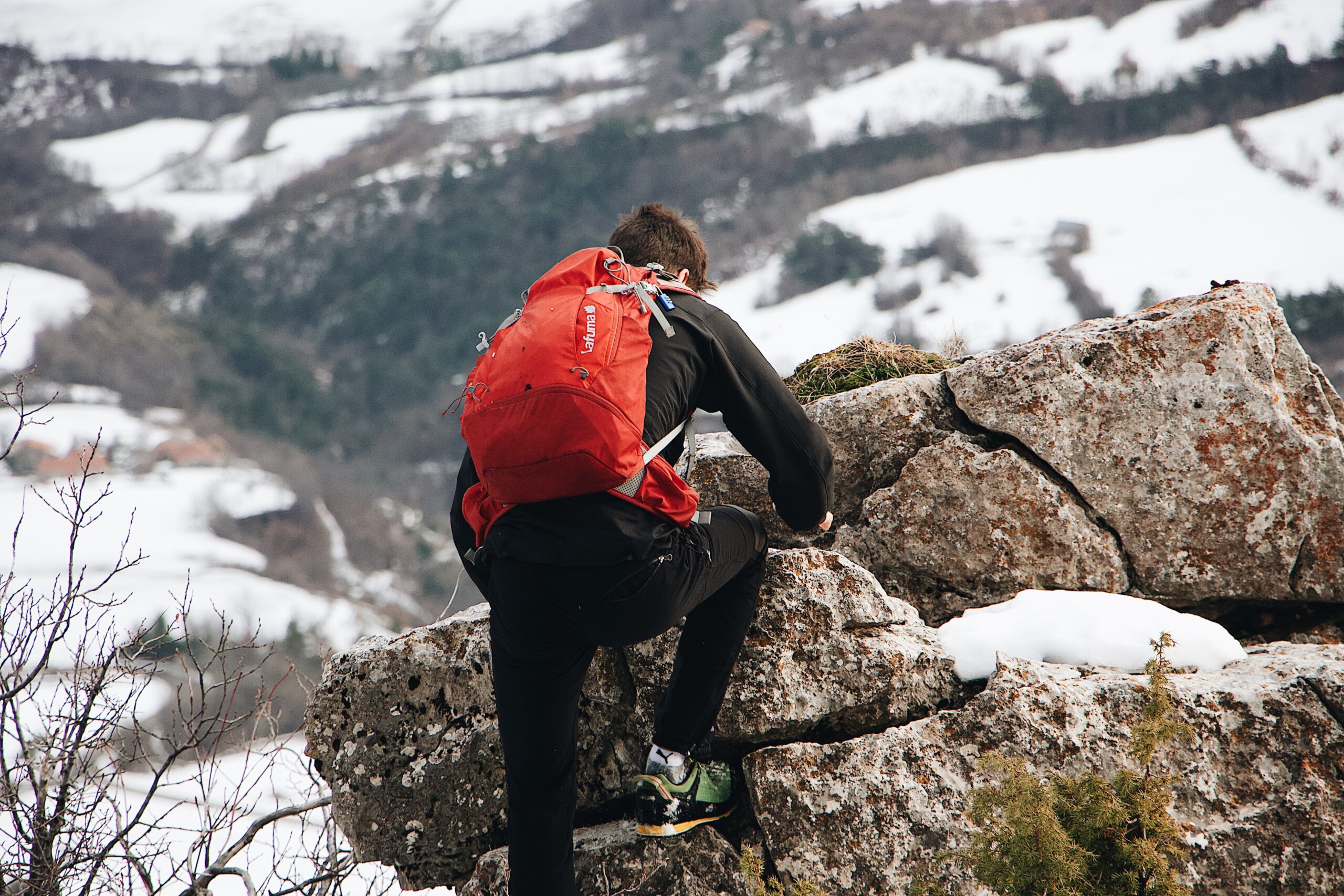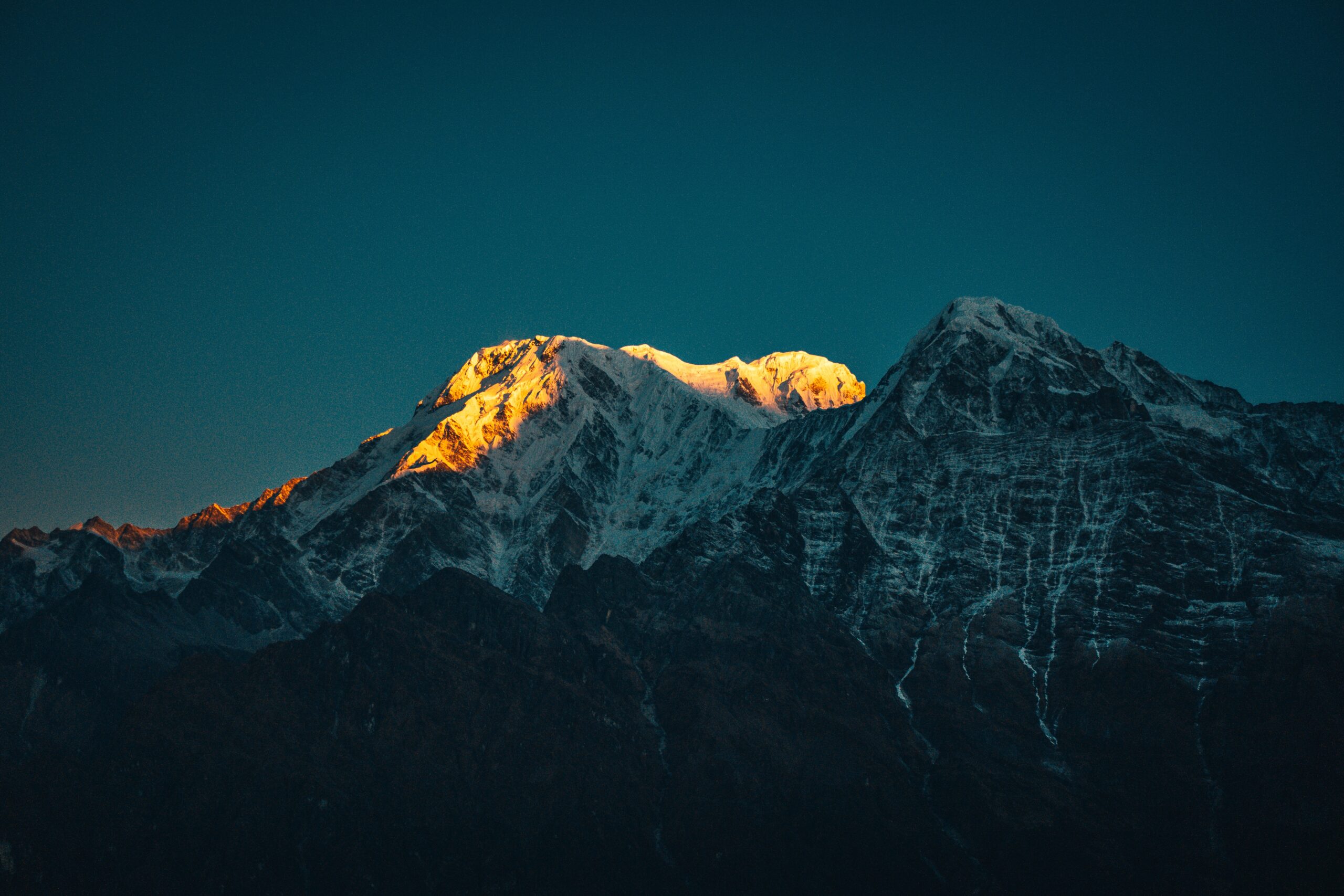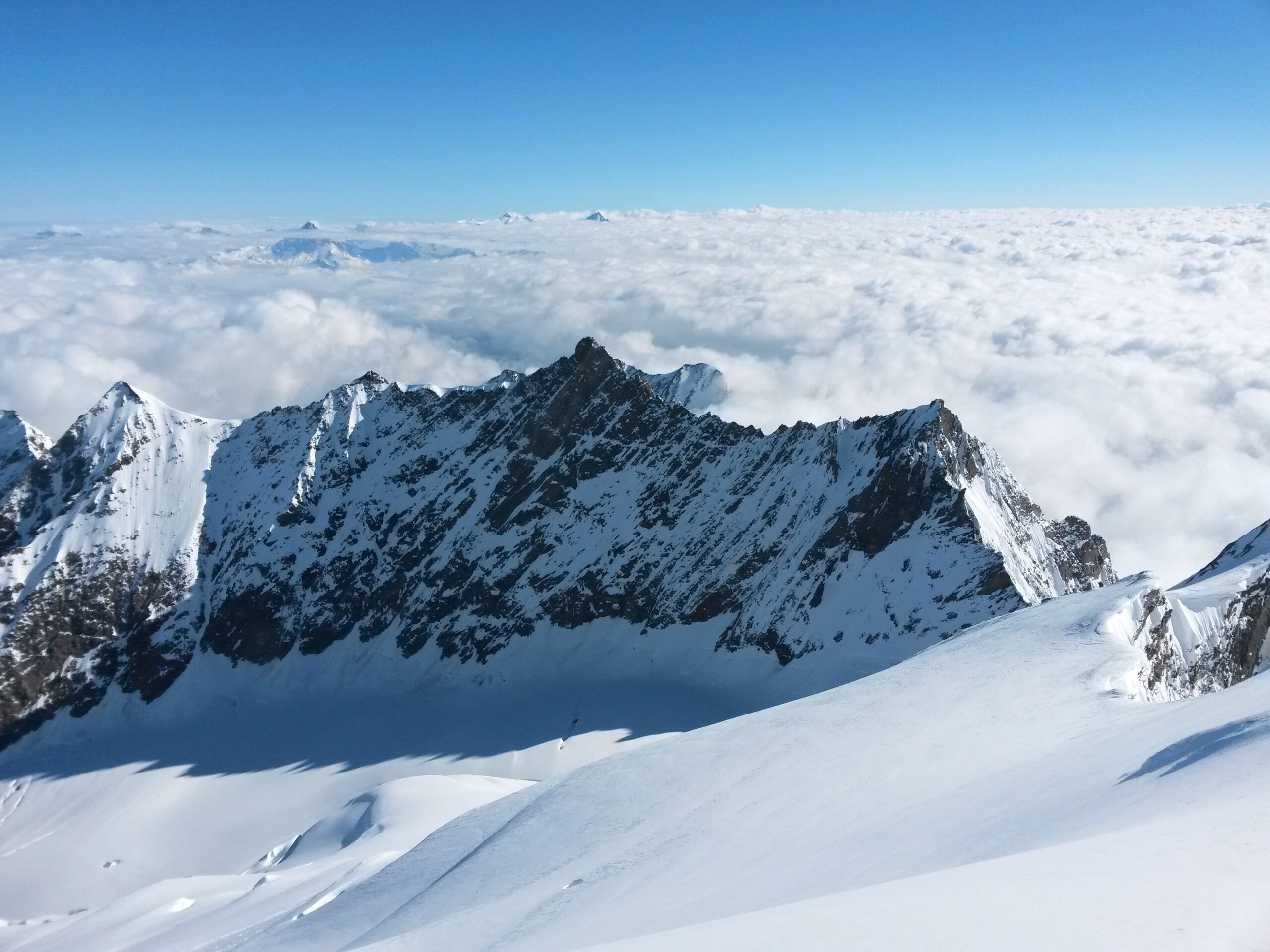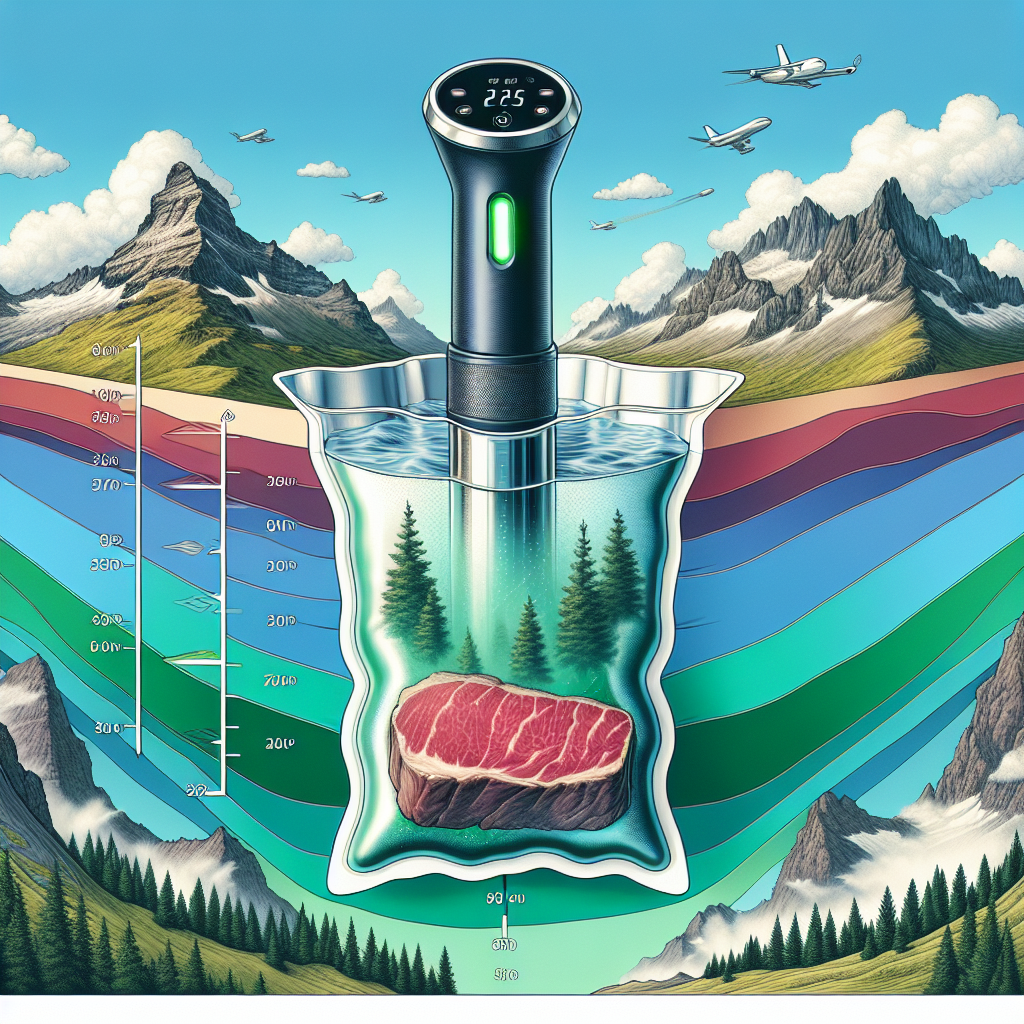
Are you someone who loves sous vide cooking but has always wondered how to adapt it to different altitudes? Well, you’re in luck! In this article, we will explore the world of sous vide cooking and share tips and tricks on how to adjust your cooking times and temperatures to achieve perfect results regardless of your location. Whether you’re a seasoned sous vide enthusiast or just starting out, this article is here to help you navigate the challenges that altitude can bring to your cooking. So, let’s get started and unravel the mystery of adapting sous vide cooking to different altitudes.

Understanding the Impact of Altitude on Sous Vide Cooking
Sous vide cooking has become increasingly popular in recent years due to its ability to provide precise and consistent results. However, one factor that often gets overlooked is the impact of altitude on sous vide cooking. The altitude at which you are cooking can affect both cooking times and temperatures, making it important to understand how altitude affects the sous vide process.
Altitude and Boiling Points
The first thing to understand is the relationship between altitude and boiling points. As you increase in altitude, the air pressure decreases, which in turn lowers the boiling point of water. This means that water boils at a lower temperature at higher altitudes compared to sea level. For example, at sea level, water boils at 100°C (212°F), but at an altitude of 2,000 meters (6,560 feet), it boils at around 95°C (203°F).
Effects of Altitude on Sous Vide Cooking Times
The lower boiling point of water at higher altitudes has a direct impact on sous vide cooking times. Since water boils at a lower temperature, it takes longer for food to reach the desired internal temperature. This means that sous vide recipes designed for sea level may not yield the same results when cooked at higher altitudes.
Understanding Air Pressure in Sous Vide Cooking
Air pressure also plays a role in sous vide cooking. When vacuum sealing food for sous vide, the air pressure inside the bag is reduced. At higher altitudes, where the overall air pressure is lower, the pressure difference between the inside and outside of the bag is reduced. This can affect the ability of the bag to maintain a tight seal, potentially leading to air leakage and compromised cooking results.
Adjusting Cooking Temperatures for Different Altitudes
Now that you understand the impact of altitude on sous vide cooking, it’s important to know how to adjust cooking temperatures to compensate for the lower boiling point of water at higher altitudes. By making the necessary temperature adjustments, you can ensure that your food cooks thoroughly and reaches the desired doneness.
Calculating Temperature Adjustment
The general rule of thumb for temperature adjustment at higher altitudes is to decrease the cooking temperature by around 2-3°F for every 1,000 feet above sea level. For example, if you are at an altitude of 5,000 feet, you would decrease the cooking temperature by approximately 10-15°F.
Using Conversion Charts
Another helpful tool for adjusting cooking temperatures is conversion charts. These charts provide pre-calculated temperature adjustments based on altitude, allowing you to easily find the appropriate temperature for your specific altitude. They can be found online or in sous vide cookbooks, making it convenient to make the necessary adjustments.
The Role of Water Vapor Pressure
When making temperature adjustments for altitude, it’s important to consider the role of water vapor pressure. As altitude increases, the water vapor pressure also decreases, which can affect the cooking process. Recipes that rely on the release of steam at certain temperatures may require adjustments to account for the lower water vapor pressure at higher altitudes.

Compensating for Altitude Variations in Cooking Times
In addition to adjusting cooking temperatures, it is also crucial to consider the impact of altitude on cooking times. The lower boiling point of water at higher altitudes means that food will take longer to cook. To ensure that your food cooks thoroughly and retains its desired texture, it’s essential to make appropriate adjustments to the cooking times.
Understanding Cooking Time Adjustment
The general guideline for adjusting cooking times at higher altitudes is to increase the cooking time by approximately 5-10% for every 1,000 feet above sea level. For example, if a recipe calls for a cooking time of 1 hour at sea level and you are cooking at an altitude of 3,000 feet, you would increase the cooking time to approximately 1 hour and 15-18 minutes.
Factors Affecting Cooking Times
It’s important to note that the exact cooking time adjustment may vary depending on various factors, such as the thickness and composition of the food being cooked. Thicker cuts of meat or denser foods may require longer cooking times to ensure they reach the desired internal temperature. Monitoring the doneness of the food during the cooking process and making slight adjustments as necessary can help achieve optimal results.
Experimenting and Adjusting Cooking Times
Since the cooking time adjustments for altitude can be somewhat subjective, it may require some experimentation to find the perfect cooking time for your specific altitude and desired level of doneness. You can start by following the recommended adjustments and then make adjustments based on the results you achieve. By being attentive and open to adjustments, you can fine-tune your sous vide cooking technique at different altitudes.

Tips for Successful Sous Vide Cooking at Different Altitudes
Successfully adapting sous vide cooking to different altitudes is not just about adjusting temperatures and cooking times. It also involves implementing certain techniques and using the right equipment to ensure consistent and delicious results.
Investing in a High-Quality Sous Vide Device
A high-quality sous vide device is essential for accurate temperature control, regardless of altitude. Look for a device that offers precise temperature settings and reliable circulation to ensure even cooking. Investing in a reliable sous vide device will help you achieve consistent results regardless of the altitude you’re cooking at.
Using Reliable Temperature Probes
Accurate temperature readings are crucial for sous vide cooking. To ensure that your food is cooked to perfection, use reliable temperature probes to monitor the water bath’s temperature and the internal temperature of your food. This will allow you to make any necessary adjustments and ensure that your food is cooked to the desired doneness.
Ensuring Proper Sealing of Food
At higher altitudes, where air pressure is lower, it becomes even more important to ensure a proper seal on your sous vide bags. Improper sealing can lead to air leakage, resulting in uneven cooking and compromised flavors. Double-check the seals on your bags and consider using vacuum sealing equipment to achieve a more secure seal.
Choosing the Right Cooking Vessel
The choice of cooking vessel can also impact sous vide cooking at different altitudes. Opt for a vessel that retains heat well, such as a stainless steel or tempered glass container, to minimize heat loss during the cooking process. Additionally, using an insulated lid or cover for your cooking vessel can help maintain a consistent temperature throughout the cooking time.

Considerations for High Altitude Sous Vide Cooking
Cooking at high altitudes presents its own unique challenges, and adjustments must be made to ensure successful sous vide cooking.
Understanding the Challenges of High Altitude Cooking
At high altitudes, not only does the lower air pressure affect cooking times and temperatures, but the reduced levels of oxygen can also impact cooking methods. It’s essential to understand these challenges and adjust your cooking techniques accordingly.
Adjusting for Reduced Oxygen Levels
To compensate for reduced oxygen levels at high altitudes, it is recommended to use shorter cook times. The lower oxygen levels can affect the cooking process and may result in the food taking longer to cook than anticipated. Monitoring the food closely and adjusting the cooking times accordingly will help achieve the desired results.
Monitoring Cooking Progress
Due to the potential variations in cooking times and temperatures at high altitudes, it becomes even more important to closely monitor the cooking progress. Regularly check the internal temperature of the food using reliable temperature probes and visually inspect the texture and doneness. Adjustments may be needed to ensure the food is cooked to your desired level of doneness.
In conclusion, understanding the impact of altitude on sous vide cooking is crucial for achieving consistent and delicious results. By adjusting cooking temperatures and times, using reliable equipment, and being mindful of the unique challenges at different altitudes, you can successfully adapt sous vide cooking to your specific location. Happy cooking, no matter the altitude!



